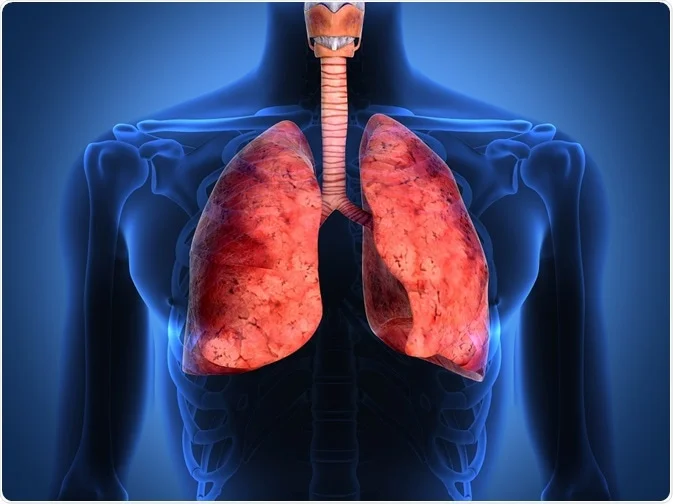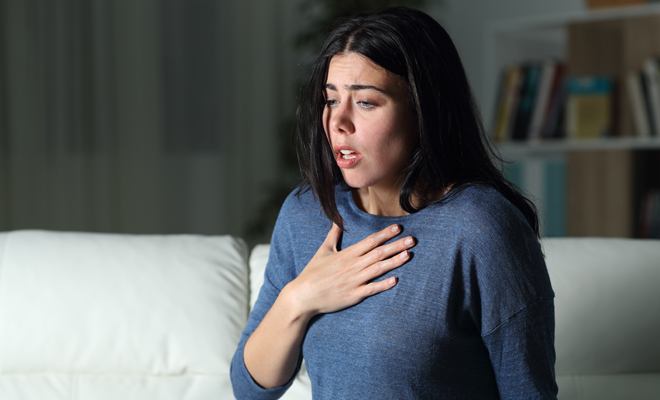Table of Contents
Asthma is chronic disorder of the airways characterized by sudden contraction (inflammation) of muscles commanding the opening and closing of the bronchi. The contraction causes an obstruction of the airflow leading to difficulty breathing (dyspnea), coughing, Paroxysmal wheezing and hypersecretion of mucus.
Asthma is a common condition, affecting about 4% of the global population. In the United States alone, it is estimated that more 20.5 million people are asthmatic. More than 6% of children in the United States suffer from asthma, usually starts at age between 5 and 15 years, according to US National Library of Medicine (NLM) and National Institute of Health (NIH).
Asthma Causes and Risk Factors
Asthma attack is the consequence of an abnormal responsiveness of airways to certain allergens (pollen, mold, dust mites contained in the animal dander and house dust). These allergy-causing substances once enter the airways, attack cells lining the bronchial tubes causing them to release chemicals that act directly on the contraction of bronchial muscles.
Stress – the theory by which stress exacerbates asthma is hypothetical. While the role of stress in asthma remains a controversial topic, many researchers believe that psychosocial stress is likely a contributing factor to the onset of asthma and other respiratory diseases, especially during childhood.
Family history – Heredity is one of the main elements of the development of asthma. If you have parents who suffer from asthma, you have higher chance to develop it.
Certain factors can be also responsible for asthma attacks:
- Respiratory infections
- Food ((pickles, peppers shrimp, limejuice, Beer, wine, hard cider, etc.)
- Exercising in cold air, inhaling pollutants (tobacco smoke)
- Frustration
- Taking certain medications (aspirin for instance).
Asthma Warning Signs and Symptoms In Adults
 In adults, the severity of Asthma attacks can vary from a simple shortness of breath (dyspnea) to serious respiratory failure (deficiency of gas exchange by the respiratory system). The attacks occur most often in the evening. Some warning signs can be characterized by headaches, simple coughing, digestive problem, sneezing, and itching. After a few dry coughs, wheezing and breathing become difficult, causing sweating and rapid heartbeat (tachycardia). In some patients, bluish discoloration of the skin and mucous membranes (cyanosis) may occur. You may cough without viscous sputum. The attacks may decrease gradually in less than one hour. In severe attacks, symptoms of wheezing, dyspnea can persist for hours or even days.
In adults, the severity of Asthma attacks can vary from a simple shortness of breath (dyspnea) to serious respiratory failure (deficiency of gas exchange by the respiratory system). The attacks occur most often in the evening. Some warning signs can be characterized by headaches, simple coughing, digestive problem, sneezing, and itching. After a few dry coughs, wheezing and breathing become difficult, causing sweating and rapid heartbeat (tachycardia). In some patients, bluish discoloration of the skin and mucous membranes (cyanosis) may occur. You may cough without viscous sputum. The attacks may decrease gradually in less than one hour. In severe attacks, symptoms of wheezing, dyspnea can persist for hours or even days.
Asthma Warning Signs and Symptoms In Children
Asthma in children may differ from that of an adult by its treatment and clinical manifestations. The disease rarely occurs before 3 years. When that happens is mostly in families that are genetically at risk or in children who have other manifestations of allergic-type disease (eczema, allergic rhinitis, etc.).
In children, evolution of asthma is variable: sometimes it remains limited to two or three isolated attacks, sometimes it persists throughout the second childhood, disappearing at puberty, but may resurface in adulthood. The severity of asthma in children is that it often hampers their chest development and their familial and scholar life.
What is the diagnosis of asthma?
After looking for possible reasons that cause the narrowing of the airways (such as anti-inflammatory drugs beta-blockers, etc.), depending on the state of your health, your physician may envisage many medical tests. The following are two of them:
Pulmonary Function Tests (PFTs) – these are a group of tests measuring the volume of air inspired and expired by your lungs. Spirometry, one of the PFTs, is a medical procedure performed to measure with the volumes airflow that you are able to take in and release. The results help in not only discovering asthma, but also various pulmonary diseases.
Bronchial provocation test (BPT) – this is a medical exam used in the diagnosis of asthma, made in the context of functional breathing. The test aims at determining if you suffer or not from bronchial hyperresponsiveness.
BPT is a multi-steps test and requires inhalation of allergens that can be either histamine or methacholine. The test is considered positive if the maximum expiratory volume in your first second decreases of more than 20% of its original value. For more information on this test, contact your physician or a medical specialist.
Asthma Treatment (Adults)
Treatment of asthma (in adults) depends on its severity. In all cases however, if you have asthma, you should always avoid or get rid of all known allergens and respiratory irritants (stress, environmental allergens, chemicals, etc.). The treatment of a mild asthma attack requires inhaler (puffers). If the treatment is not effective enough or if the attack is too severe, your doctor may suggest corticosteroids and hospitalization to oxygenate, give medicines (by injection mostly) and monitor you.
To deal with sudden attacks, asthma patients can use Short-acting bronchodilators when they feel the need. In moderate cases of asthma, inhaled corticosteroids are often recommended. In case of severe asthma, inhaled corticosteroids are prescribed in high doses; medications can be associated with long-acting bronchodilators. The General corticosteroids are prescribed only if it is necessary and in the lowest dose possible.
Asthma Treatment (Children)
Treatment of asthma in children differs somewhat from that of adults: the bronchodilators should be administered by inhalation before age 5, corticosteroids should be avoided as a prescription because of the continuing risk of negative effects on growth. In fact, certain drugs used to treat adults are not effective in children.
The treatment is based on a healthy lifestyle and attacks prevention: air purification, elimination of allergens, moderate exercise, and absence of cigarette smoke. These precautions are as important as drug treatment. Whenever possible, parent must avoid their asthmatic children with any contact with allergens.



